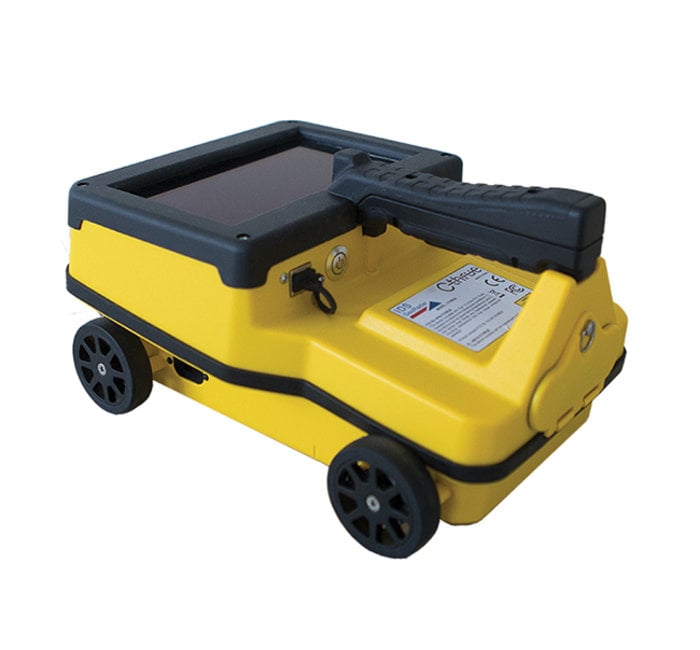Concrete Scanning: A Vital Action In The Direction Of Making Sure Structural Stability and Security
In the realm of construction and infrastructure maintenance, the importance of concrete scanning can not be overstated. This careful process holds the vital to unveiling potential threats concealed underneath the surface of seemingly solid frameworks. By utilizing innovative modern technology and approaches, concrete scanning acts as an essential device in guaranteeing that the integrity and safety and security of bridges and buildings are maintained to the greatest criteria. Nevertheless, past its surface-level effects, the function of concrete scanning extends much much deeper than fulfills the eye.
Relevance of Concrete Scanning
Concrete scanning plays a crucial duty in guaranteeing the architectural stability and safety of structures and infrastructure jobs. By making use of innovative innovations such as ground-penetrating radar (GPR) and electro-magnetic induction, professionals can non-destructively evaluate concrete structures to detect possible issues, voids, embedded things, and reinforcement design. This procedure enables very early detection of abnormalities that could jeopardize the security of a structure, preventing expensive problems and making certain the security of occupants.
Before drilling, cutting, or coring into concrete, scanning assists determine the accurate locations of rebar, post-tension cables, and other ingrained components, minimizing the threat of unintentional hits that could lead to architectural weaknesses. Additionally, concrete scanning aids in quality control by verifying the density of concrete covers and identifying any kind of disparities that might impact the overall durability of the framework.
Technology for Concrete Examination

Advantages of Very Early Detection
Prompt discovery of structural problems can significantly reduce threats and ensure the longevity of construction jobs. By recognizing potential problems early in the building procedure, stakeholders can take aggressive measures to address issues before they escalate into larger and much more expensive issues. Among the key benefits of early detection is the avoidance of structural failings, which can present significant safety and security threats and cause task hold-ups and economic losses.
Additionally, very early discovery enables timely repairs and upkeep, which can aid expand the life-span of the framework. By resolving problems immediately, building and construction groups can stay clear of pricey repair services or perhaps the requirement for early replacement of structural elements. This aggressive strategy not just conserves time and cash however also improves the general safety and security and resilience of the building project.
Furthermore, very early detection can boost job planning and decision-making by giving stakeholders with beneficial understandings into the problem of the structure. Armed with this information, task managers can make enlightened options concerning building products, timelines, and methods, bring about much more reliable and successful task outcomes.
Making Certain Structural Security
Making sure the structural security of a construction job is paramount to its security and longevity. Architectural stability describes the ability of a structure or infrastructure to preserve its kind and function under environmental problems and numerous lots. To achieve this, thorough evaluation and surveillance of the structure are essential. Concrete scanning plays a critical role in making sure architectural security by finding prospective problems such as gaps, delamination, or support corrosion that might compromise the stability of the framework with time.
By making use of innovative scanning modern technologies like ground-penetrating radar (GPR) and electromagnetic induction, building and construction specialists can non-invasively evaluate concrete frameworks to determine areas of issue under the surface area. This positive method enables for the very early discovery of weak points or problems, making it possible for prompt repairs or support to protect against architectural failures.
Normal concrete scanning throughout various construction stages and throughout the life process of a structure can help keep its security, alleviate threats, and guarantee the safety important link of owners. By focusing on structural security with concrete scanning, building projects can boost their durability and toughness, ultimately contributing to better security and long life.

Avoiding Vital Failures
To safeguard versus catastrophic occasions, meticulous surveillance and positive upkeep are necessary in preventing important failings within architectural frameworks. Spotting prospective concerns prior to they intensify is vital to stop architectural failures. Implementing routine examinations, such as concrete scanning, can reveal surprise defects like voids, splits, or rust that can compromise the stability of a framework. By making use of advanced scanning modern technologies like Ground Penetrating Radar (GPR) or Concrete X-ray, engineers can non-destructively evaluate the problem of concrete and identify powerlessness that call for support or repair work - RainierGPR Service Areas.

Conclusion
In conclusion, concrete scanning plays an essential role in ensuring useful site structural honesty and security by making use of sophisticated innovation for very early detection of potential problems. This aggressive strategy helps avoid essential failings and ensures the security of frameworks. It is important to prioritize concrete inspection as a basic method to shield the long life and safety and security of structures and facilities.
Concrete scanning plays a crucial function in making sure the architectural stability and safety of structures and framework tasks. In addition, concrete scanning help in high quality control by verifying the density of concrete covers and discovering any kind of inconsistencies that may influence the total toughness of the framework. Concrete scanning plays an important role in ensuring architectural stability by detecting possible concerns such as voids, delamination, or support rust that could endanger the stability of the structure over time.

In verdict, concrete scanning plays a critical role in ensuring structural stability and safety and security by making use of innovative modern technology for very his comment is here early discovery of potential issues.
Comments on “RainierGPR Service Areas: Comprehensive Coverage for Concrete Scanning”